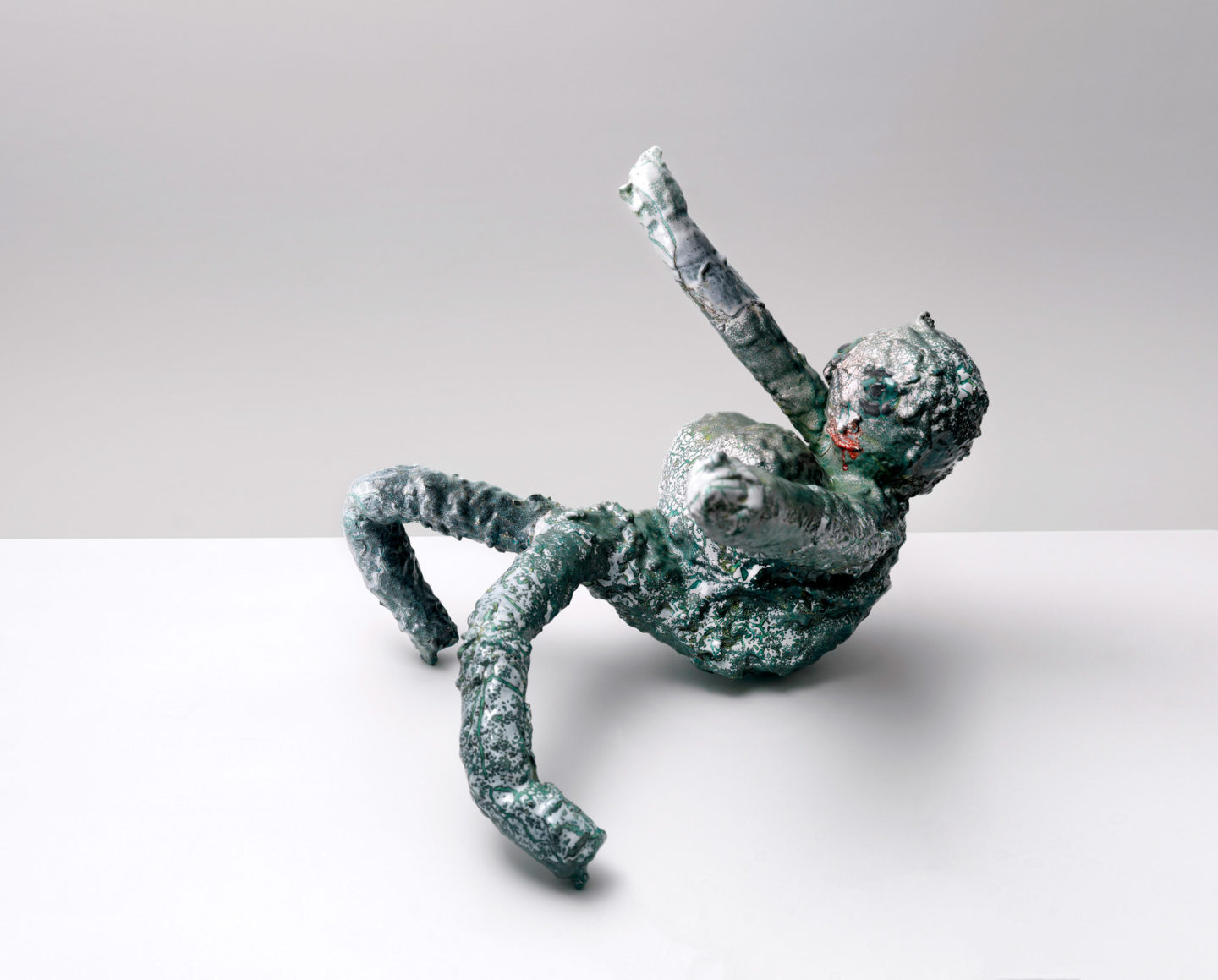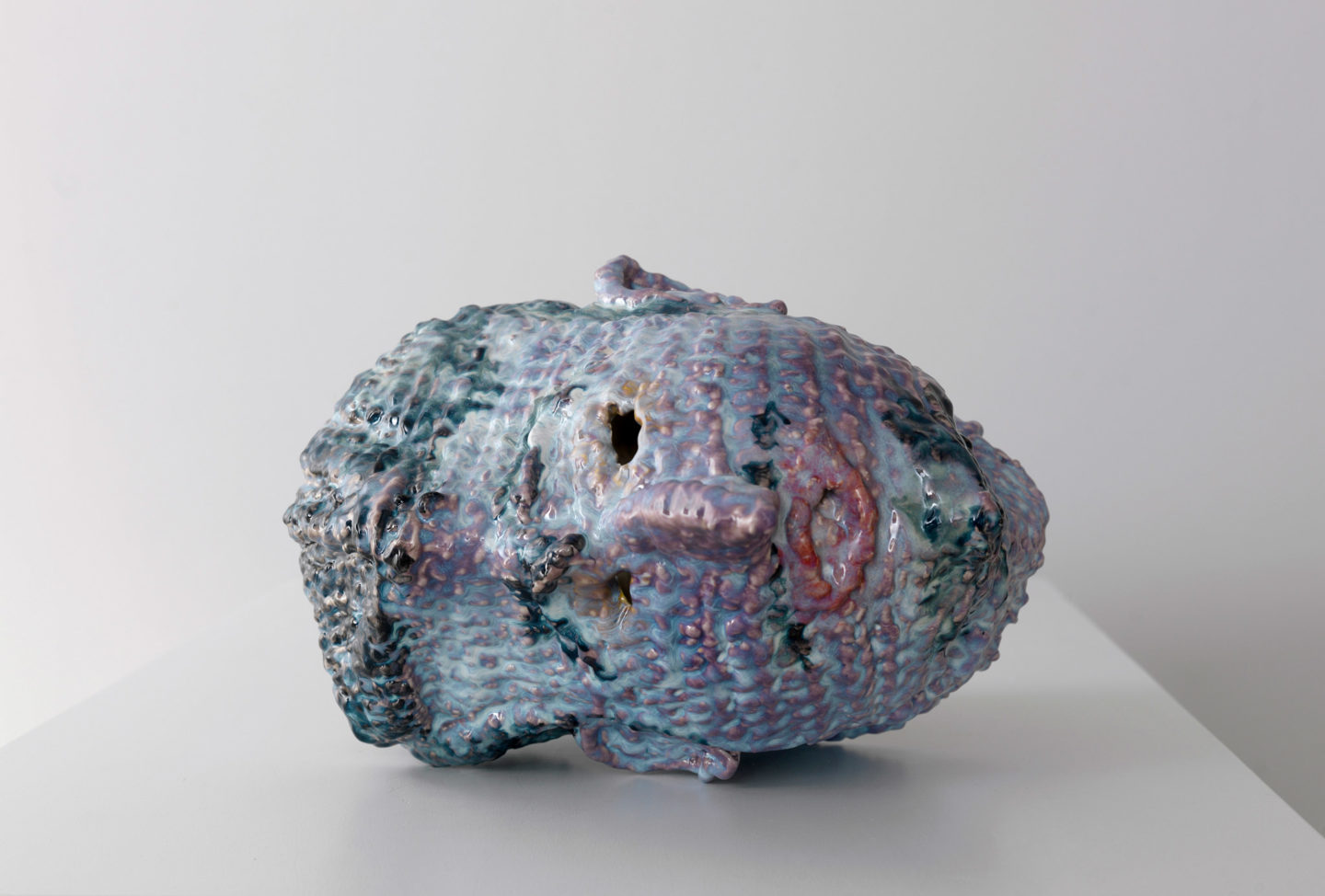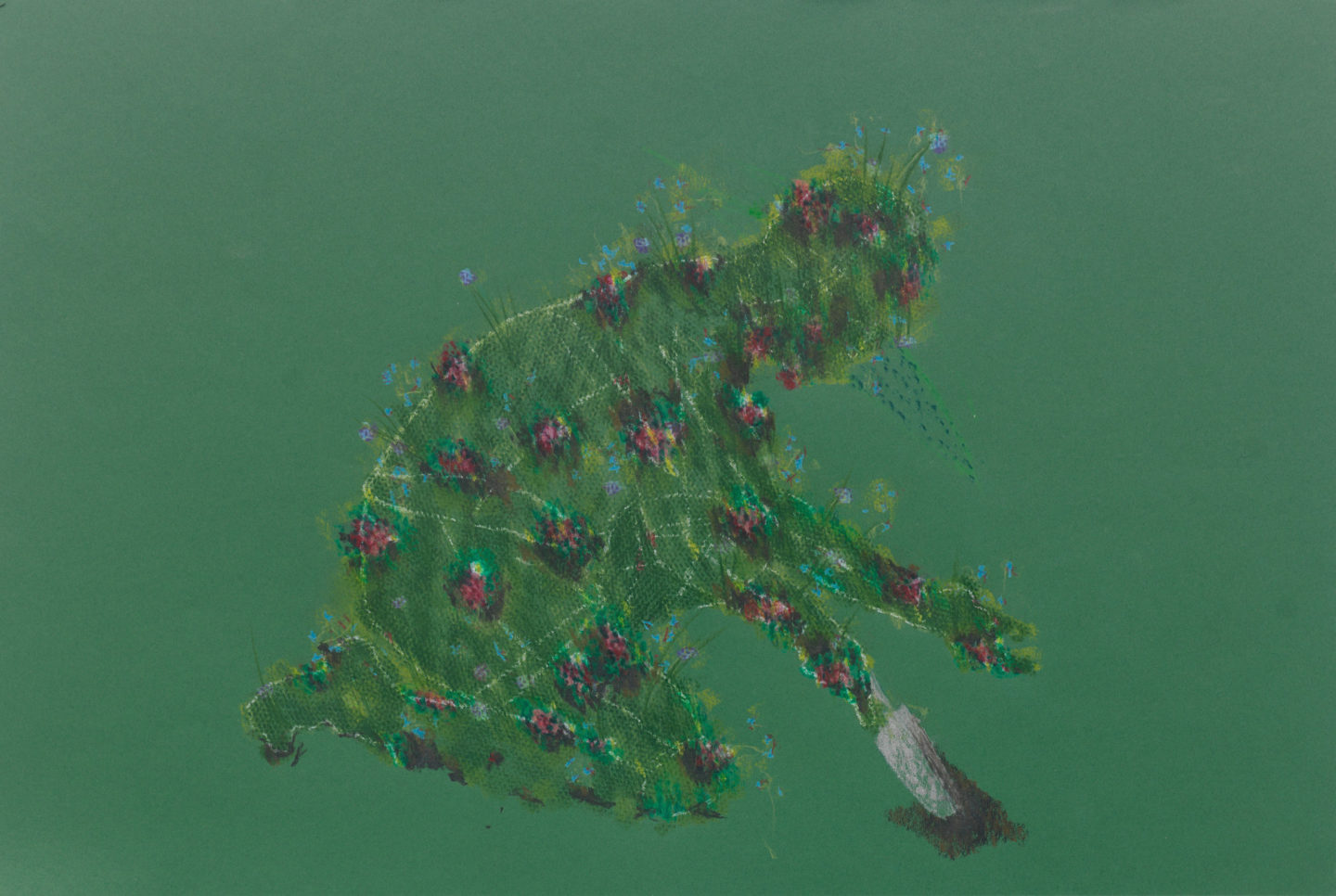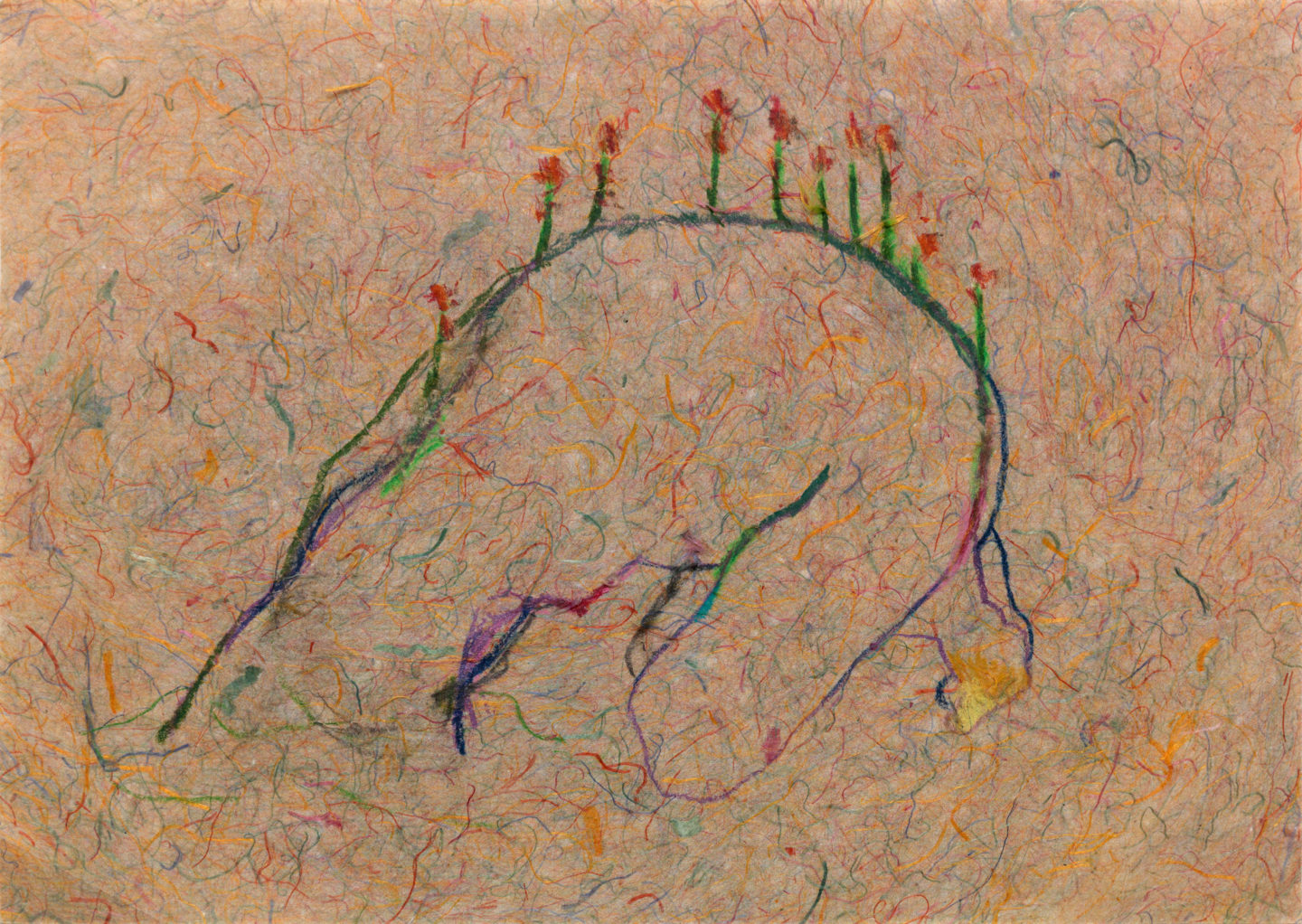Christian Holstad: Time wounds all heels
Victoria Miro Venice
10 April–8 May 2021
Tuesday–Saturday: 10am-1pm & 2-6pm
Monday by appointment
No booking is required when visiting the exhibition We welcome a maximum number of 5 people at a time to our Venice gallery
The US artist’s fourth solo exhibition with the gallery features new two- and three-dimensional works in ceramic, crochet, fabric and pencil, and an earlier Eraserhead drawing that acts as a touchstone for this body of work.
United by attitude rather than medium or method, Christian Holstad’s work probes received ideas about class, value, culture and society, often leading the viewer on richly evocative journeys into cycles of creation, growth, consumption and dissipation. The title of this exhibition is borrowed from a pun about comeuppance for poor behaviour (heel in this instance meaning a disreputable person), based on the aphorism ‘time heals all wounds’. Holstad first saw it in on a plaque in a queer bar, where it could also have referred to the heel of a foot or high heeled shoes. This shift of definitions, altered by specific contexts or codes, acts as one conceptual guidepost for the works on view.
From finely honed acts of drawing or crocheting to the fiery unpredictability of the kiln, the ways in which processes both controlled and uncontrollable have the potential to transform provide another thematic route through the exhibition. While many of the works impress upon us the intensity of their hand-crafted surfaces, hands and gloves feature literally as well as figuratively in the works on display. In one instance, a sculpture of a pair of boxing gloves is made from oven mitts; in another, an early example of the artist’s celebrated Eraserhead drawings (Grain fields, 2003/2021), in which Holstad selectively erases sections of images cut from newspapers and magazines, meaning is altered in ways that hint at subtextual layers through the image. For the past year the artist has meditated close to this small drawing, returned to him after the passing of a close friend to whom Holstad had given the work. The artwork, transformed, bears new meaning.
This theme is further explored in the exhibition by the idea of the portal, or conduit, from which materials emerge in a new form, or by which the viewer is transported. The crochet works on view, at once crafted in the artist’s lap, echo the position in which they were made, depicting the potter’s hands at a wheel, or the seated position taken during meditation, gateway to other states of being. The door of the kiln through which ceramic works are passed and emerge, spectacularly changed, is another portal that drives the creative process. Clay has long been a favoured medium of Holstad who, in his formative years, discovered its tactile, emotive and alchemical nature. The Italian word forno, meaning both kiln and oven, reflects the link between the artist’s work in ceramic and his passion for cooking, which he considers part of his artistic practice. Many of Holstad’s recent ceramic works are the result of an extended period living and working in Faenza, Italy, which is home to the historical manufacture of majolica ware known as faience. Collaborating closely with Italian ceramicists, he has developed new ways of working with clay, expanding on the vast array of techniques which he has been honing over three decades, borrowing from American, English and Japanese traditions.
To make the figurative ceramics on display, Holstad developed a process of first crocheting soft sculptures using cotton butcher’s twine, dipping these forms into liquid clay and then firing them. The rich glazes he then uses give the finished works a glass-like quality. Almost impossible to control, the process becomes less about authorial control than about alchemy. As the artist says, ‘These are about transformation. For each figure I make, I lose four in the process. For me they are a miracle.’
1
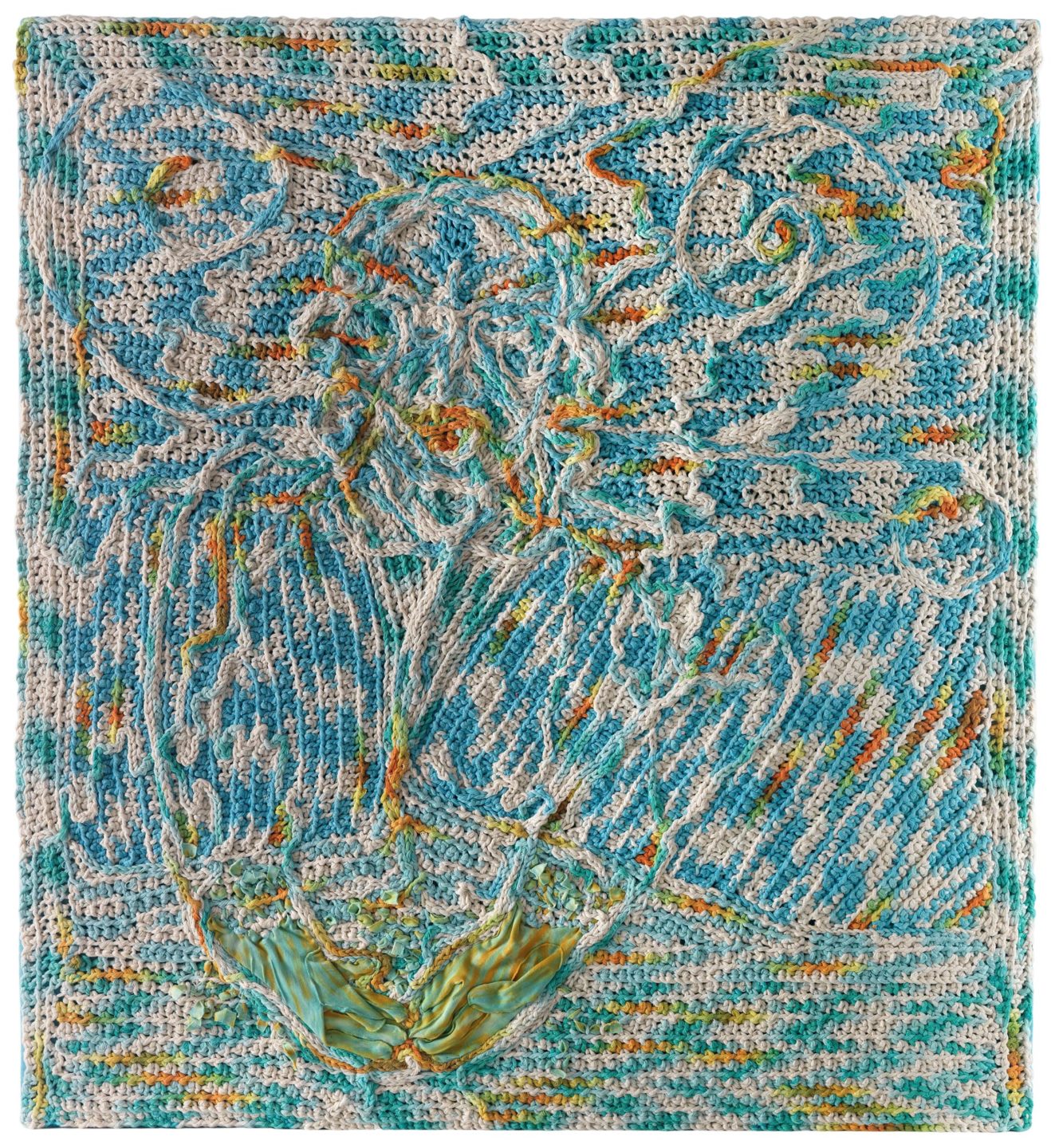
Hand dyed cotton butcher’s twine with linen, cotton, wool and cotton gloves on plywood
104 x 95 cm
41 x 37 3/8 in
Christian Holstad, Inhale, exhale. (with Peter Dean & Frank Lincoln Viner), 2021
More info‘Almost always, in any of the things I’m doing, I’m not trying to control everything. I’m very willing and excited about allowing the process to show me whatever it has to reveal to me.’ — Christian Holstad
From finely honed acts of drawing or crocheting to the fiery unpredictability of the kiln, the ways in which processes both controlled and uncontrollable have the potential to transform provide a thematic route through the exhibition. The crochet works on view, crafted in the artist’s lap, echo the position in which they were made, depicting the potter’s hands at a wheel, or the seated position taken during meditation, gateway to other states of being.
5
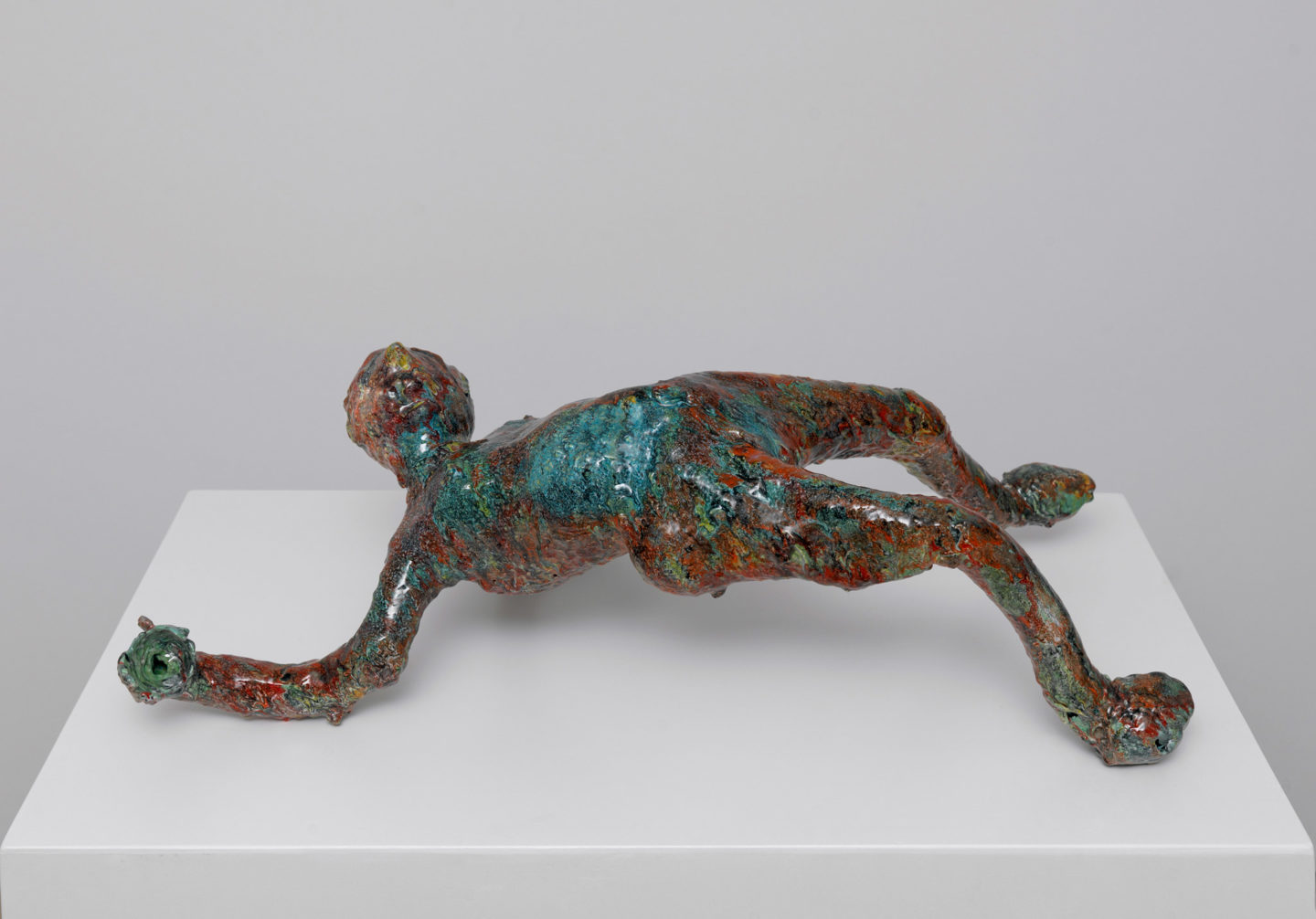
Glazed ceramic
87 x 47 x 29 cm
34 1/4 x 18 1/2 x 11 3/8 in
Christian Holstad, Stellar evolution, 2019-2020
More info‘For each figure I make, I lose four in the process. For me they are a miracle.’ — Christian Holstad
Clay has long been a favoured medium of Holstad who, in his formative years, discovered its tactile, emotive and alchemical nature. The Italian word forno, meaning both kiln and oven, reflects the link between the artist’s work in ceramic and his passion for cooking, which he considers part of his artistic practice.
Many of Holstad’s recent ceramic works are the result of an extended period living and working in Faenza, Italy, which is home to the historical manufacture of majolica ware known as faience. Collaborating closely with Italian ceramicists, he has developed new ways of working with clay, expanding on the vast array of techniques which he has been honing over three decades, borrowing from American, English and Japanese traditions.
To make the figurative ceramics on display, Holstad developed a process of first crocheting soft sculptures using cotton butcher’s twine, dipping these forms into liquid clay and then firing them. The rich glazes he then uses give the finished works a glass-like quality. Almost impossible to control, the process becomes less about authorial control than about alchemy. As the artist says, ‘These are about transformation. For each figure I make, I lose four in the process. For me they are a miracle.’
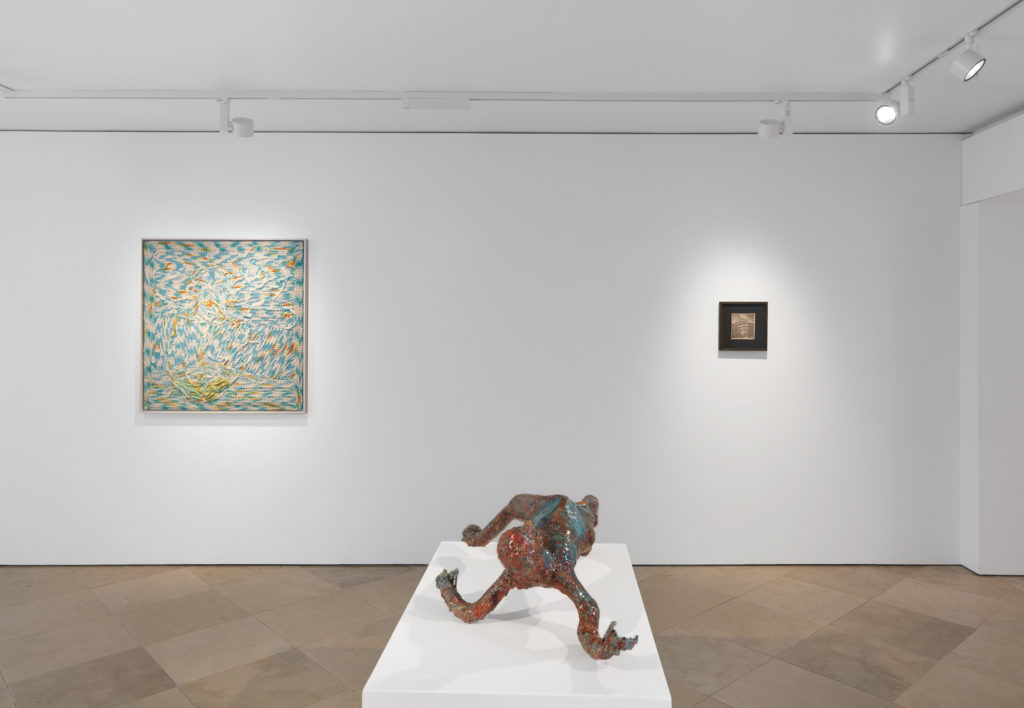
4
‘I know for certain that a lot of the work, without even intentionally trying, ended up having to do with something that I had learned about Italian culture in particular, and a lot of folklore around the forno, meaning both kiln and oven.’ — Christian Holstad
The idea of the portal, or conduit, from which materials emerge in a new form, or by which the viewer is transported is central to the exhibition. The door of the kiln through which ceramic works are passed and emerge, spectacularly changed, is a portal that drives the creative process.
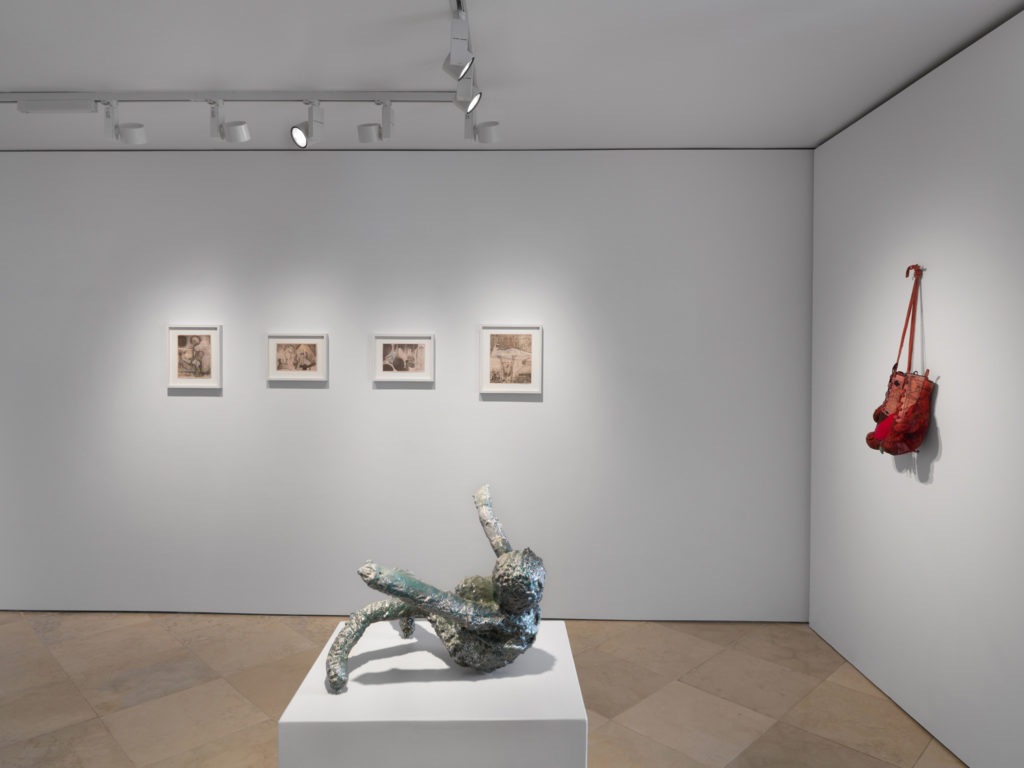
3
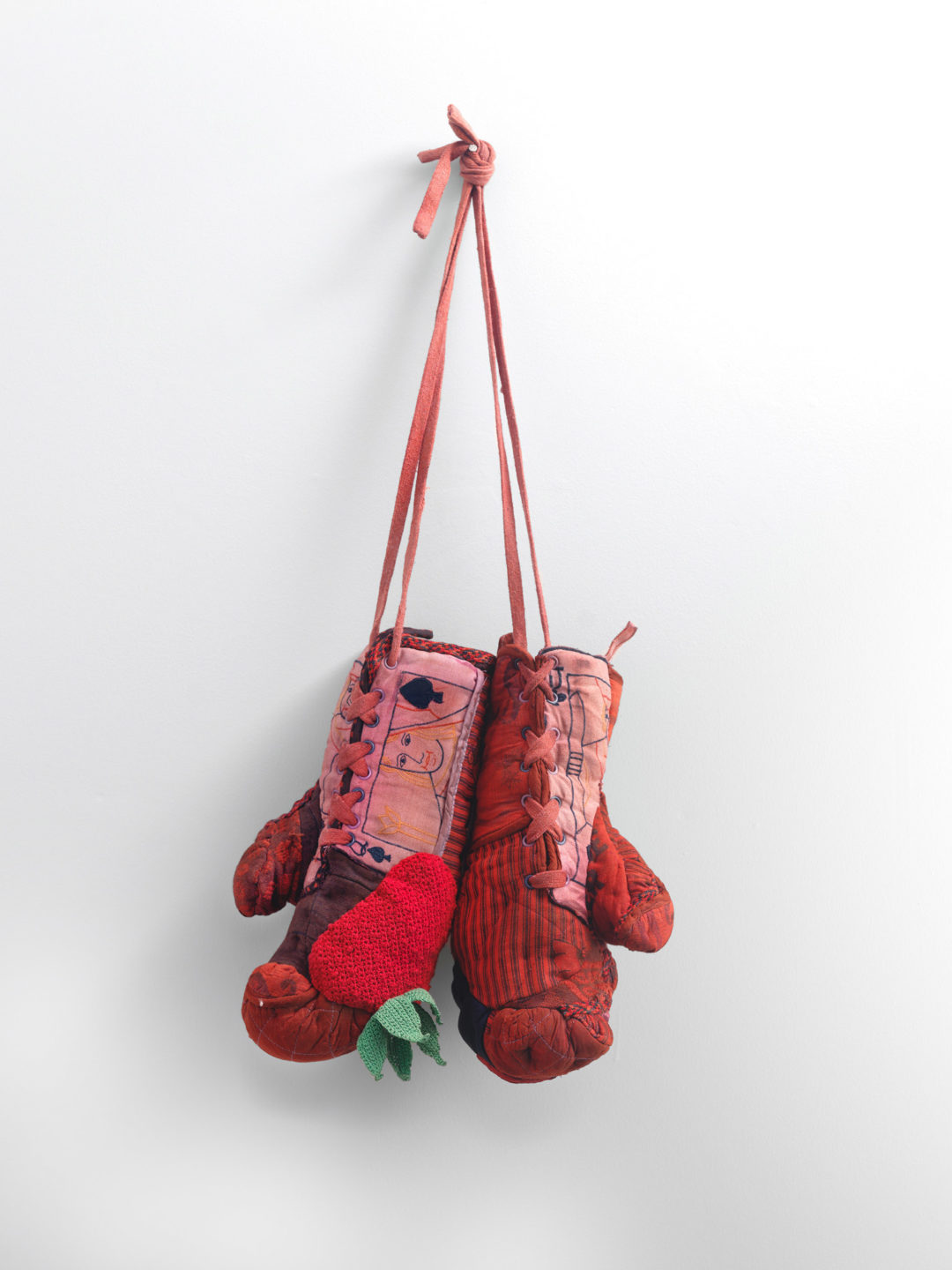
Oven mitts, pads, grommets and laces
75 x 30 x 18 cm
29 1/2 x 11 3/4 x 7 1/8 in
Christian Holstad, Boxing gloves (handwork strawberry), 2020-21
More info‘The boxing gloves or the pot mitts are much like the shoes of a ballerina, or a postman for that matter. They’re worn down over time… I started to see all these things as like a trophy of some sort.’ — Christian Holstad
While many of the works impress upon us the intensity of their hand-crafted surfaces, hands and gloves feature literally as well as figuratively in the works on display. In one instance, a sculpture of a pair of boxing gloves is made from oven mitts.
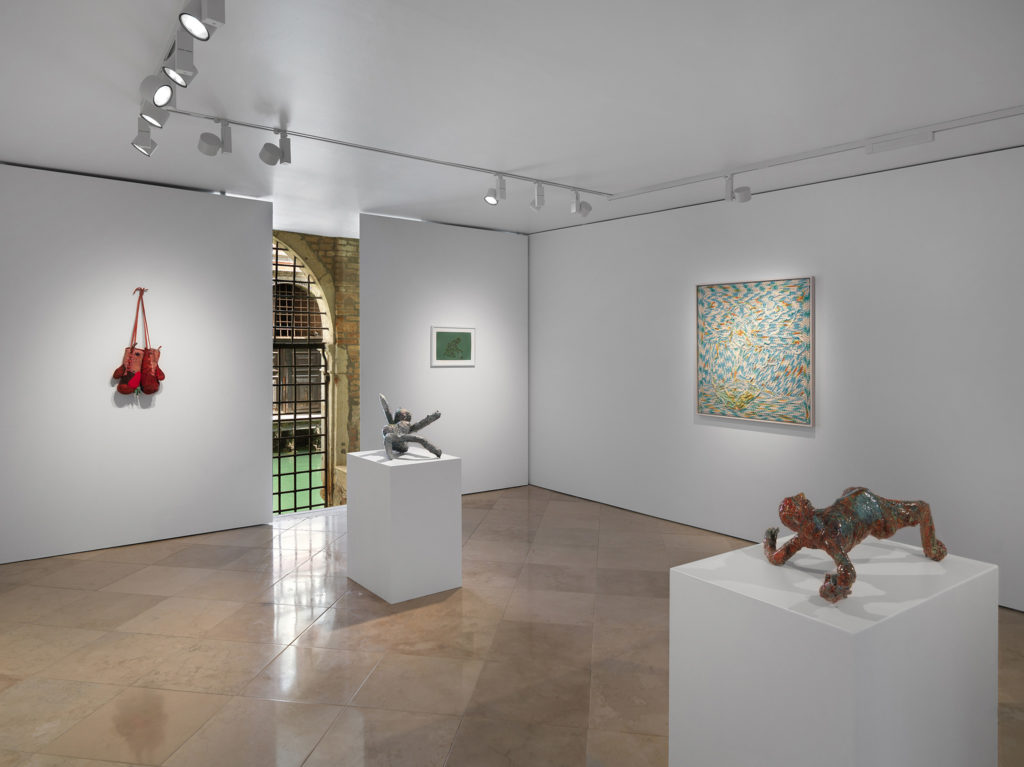
2
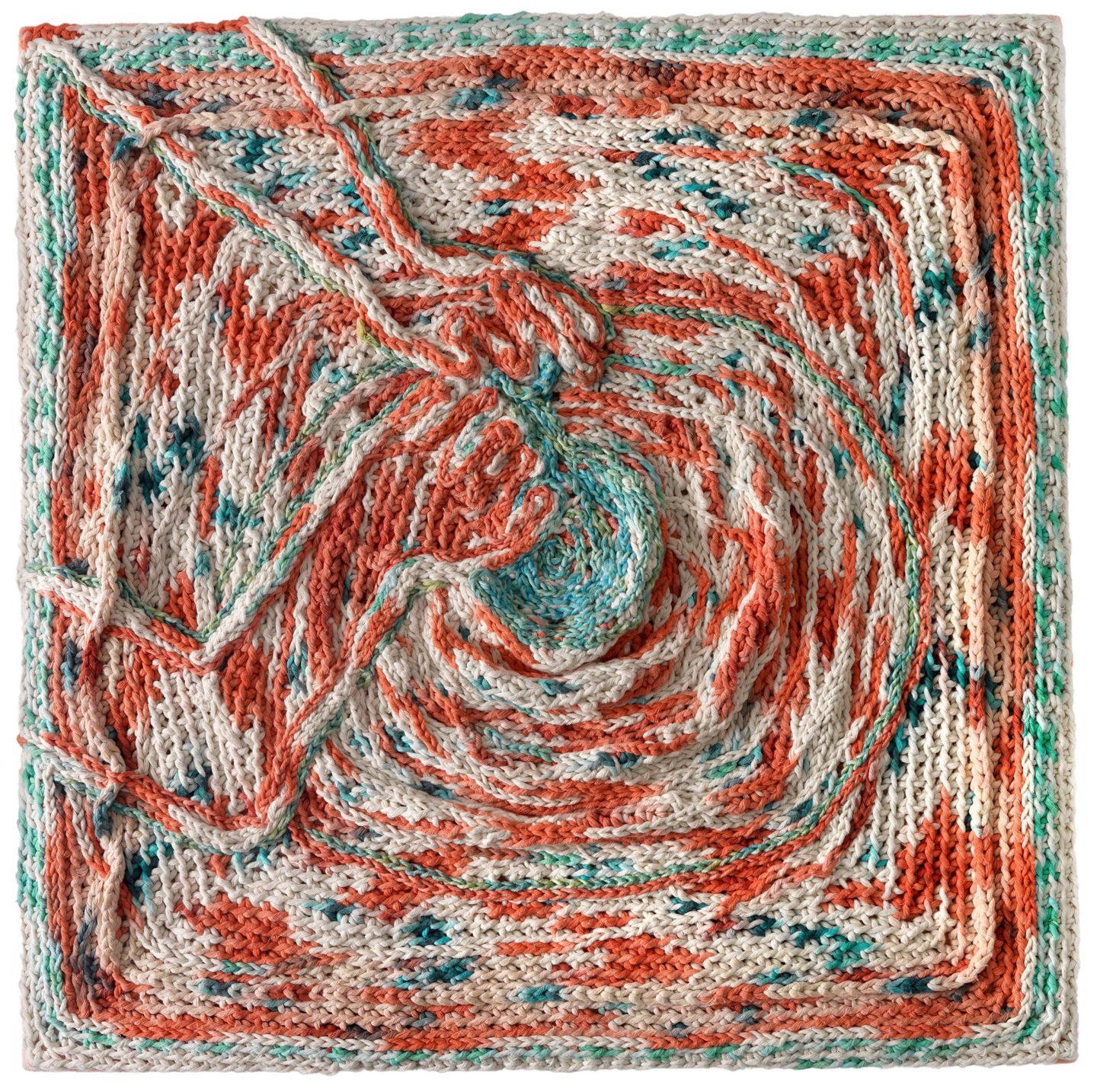
Hand dyed cotton butcher’s twine, linen, cotton and wool on plywood
66 x 66 cm
26 x 26 in
Christian Holstad, Tornio (after Beato), 2020-2021
More info‘I choose butcher’s twine because I love the word butcher’s twine, I love all of what it can concoct in your head. Then to take that same visual and turn it into something that’s like a blanket or something soft, it gives it yet another meaning.’ — Christian Holstad
Like his crocheted ceramics, Holstad’s crochet wall works also make use of butcher’s twine. In these, he employs a traditional Ikat technique – a resist dye process in which sections of fabric are tied to resist dye (the word itself derives from the Malay-Indonesian ‘mengikat’, meaning to tie or bind). Speaking about his use of butcher’s twine, the artist says, ‘I realised that I wanted to have as much of my art be about things that are everyday objects. So I choose butcher’s twine because I love the word butcher’s twine, I love all of what it can concoct in your head. Then to take that same visual and turn it into something that’s like a blanket or something soft, it gives it yet another meaning. There’s an everydayness about what I do and there’s an everydayness about the materials that I choose. The work can repeatedly come back into your life through your own daily life.’
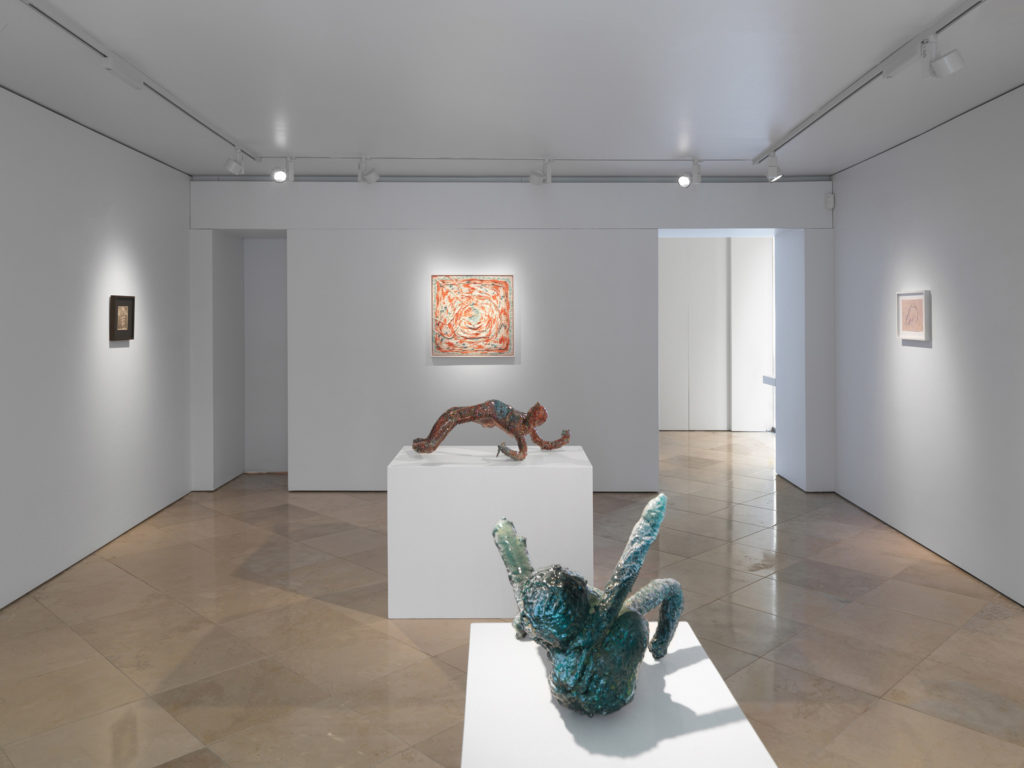
10
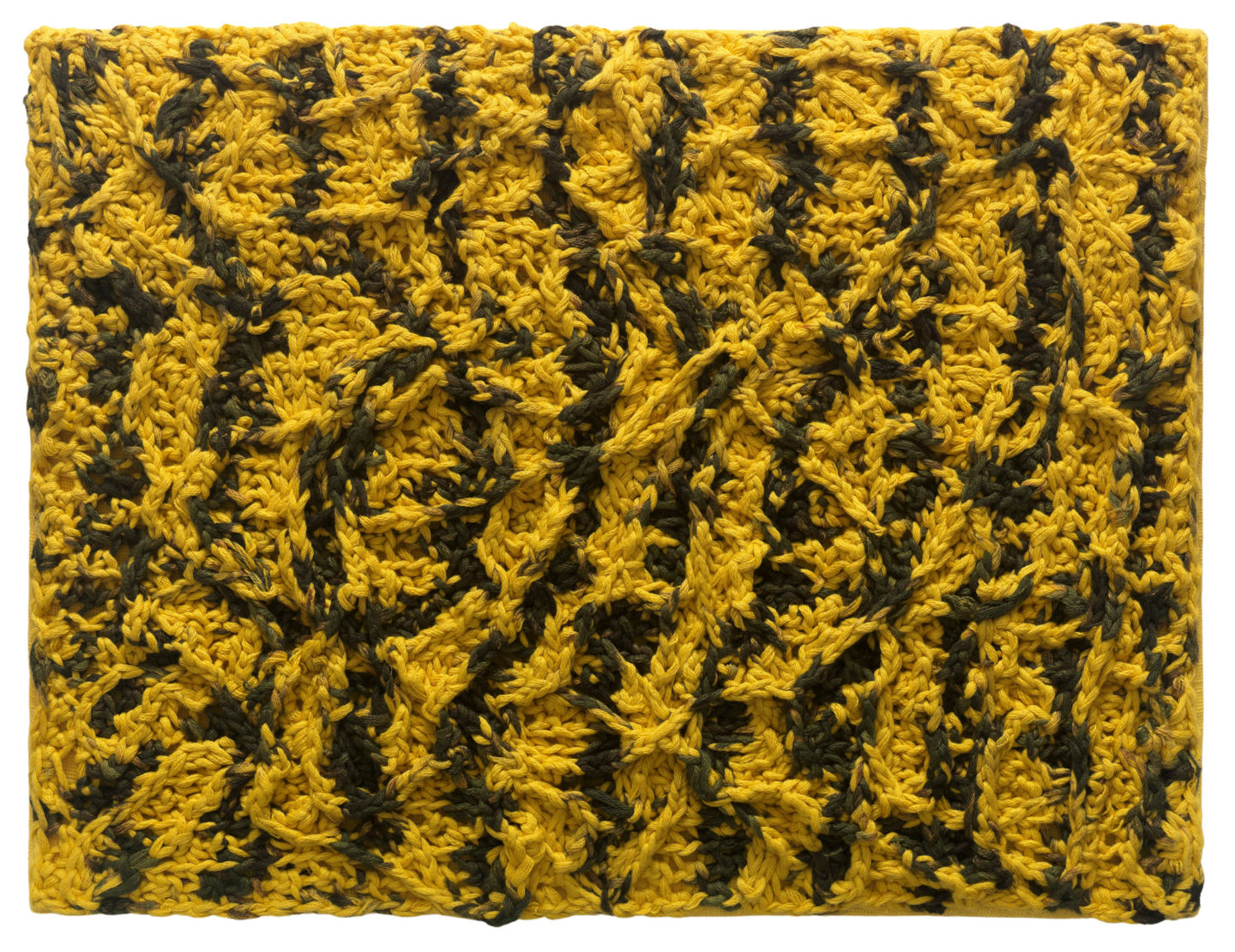
Hand dyed cotton butcher’s twine, linen, cotton and wool on plywood
40 x 53 cm
15 3/4 x 20 7/8 in
Christian Holstad, Grain fields (green and yellow), 2019-2021
More info‘Grain fields reminded me of when you’re in a car and you’re passing grain fields and it’s like a stutter in your visual field. To me that’s a kind of hypnotic experience, even meditative… you can go into another world.’ — Christian Holstad
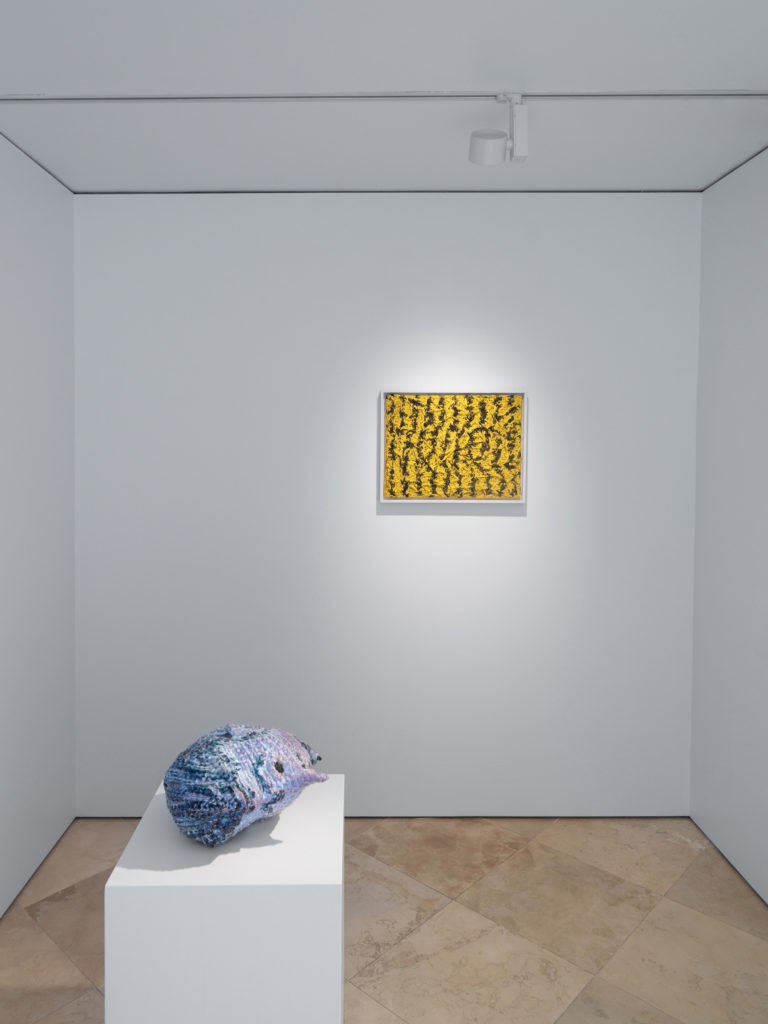
8
9
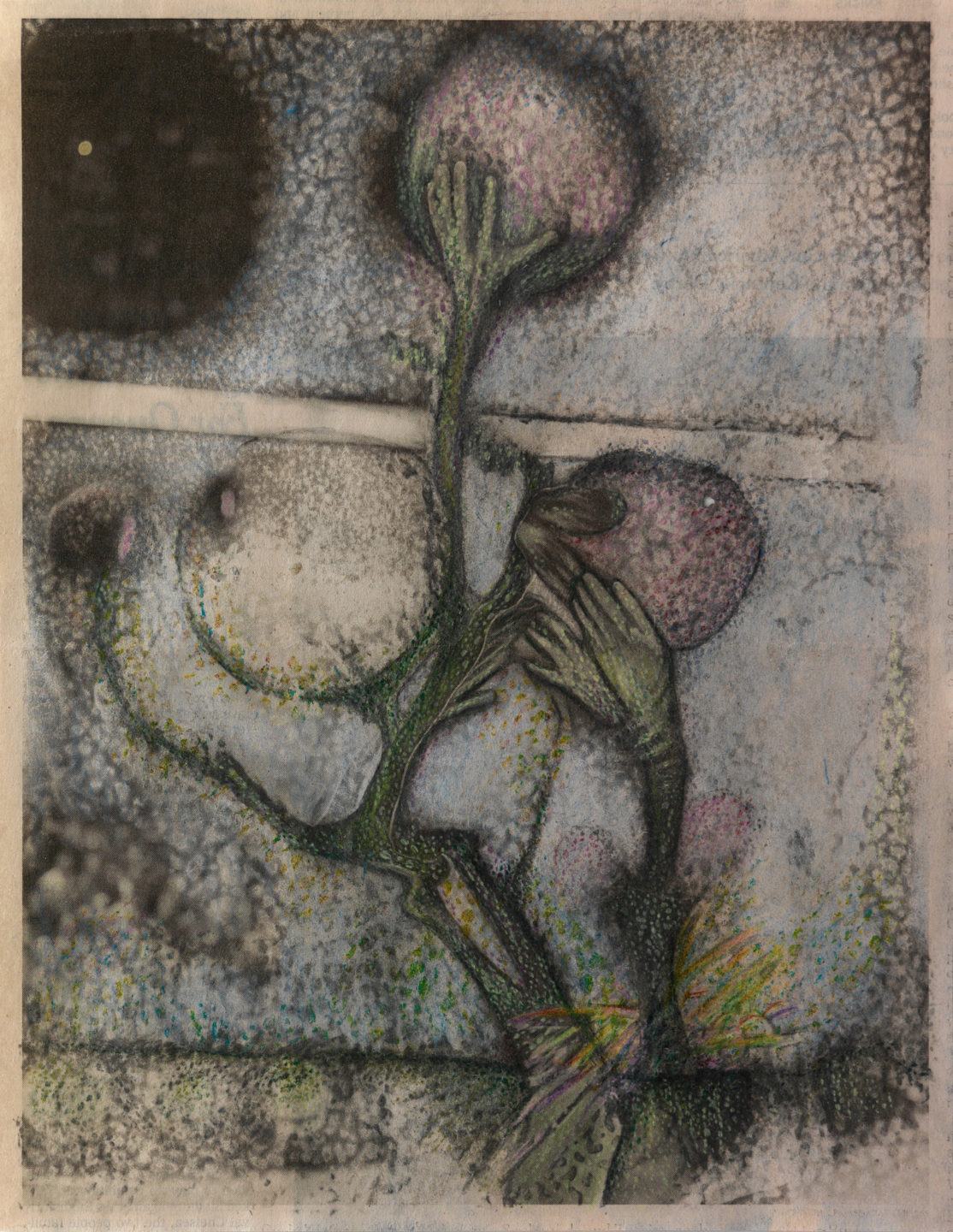
Graphite and coloured pencil on newsprint
25.5 x 20 cm
10 1/8 x 7 7/8 in
Christian Holstad, Buddings, 2021
More infoIn the artist’s celebrated Eraserhead drawings, Holstad selectively erases sections of images cut from newspapers and magazines, altering meaning in ways that hint at subtextual layers through the image.
He creates the works through a process that involves clipping images from newspapers and first rubbing areas out, leaving in their place blank, haunting suggestions of forms. To these Holstad adds drawn elements, poetically emphasising or dramatising human features both imagined and real. His technique destabilises our experience of media imagery, transforming everyday pictures into insightful and highly personal commentaries which are at times sombre, at times celebratory. It is a process the artist has referred to as ‘drawing backwards’, he explains: ‘Erasing teaches you how shadow actually functions in an image: when you take it away you actually see what it does to an image. It’s a very intuitive process.’
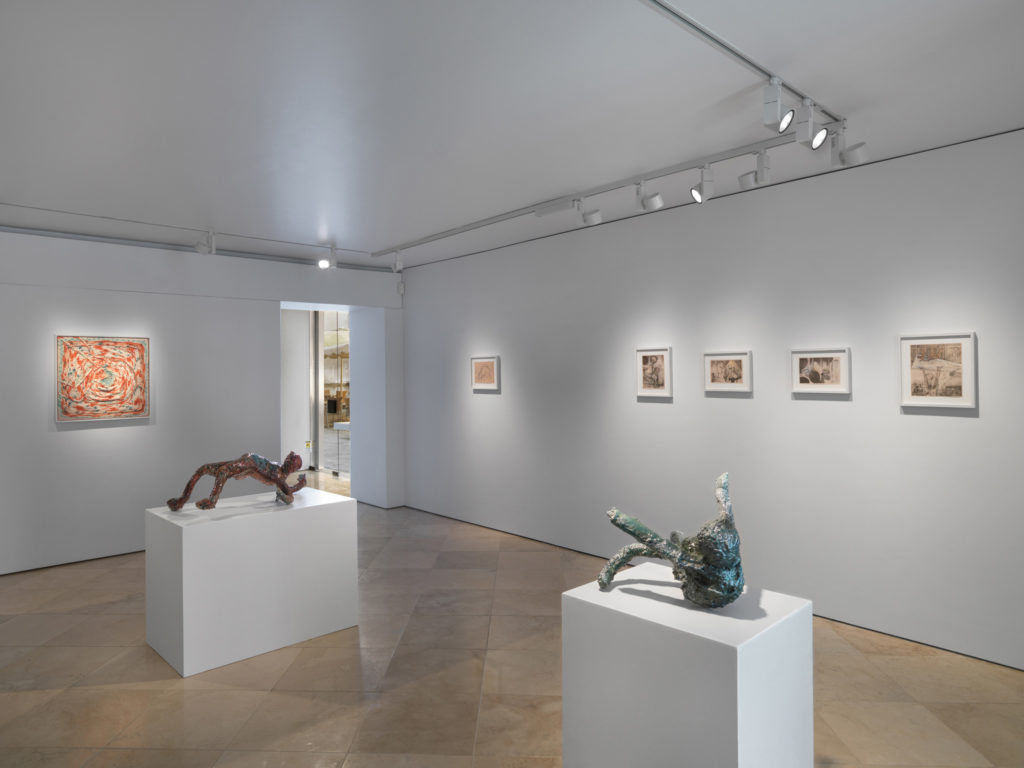
7
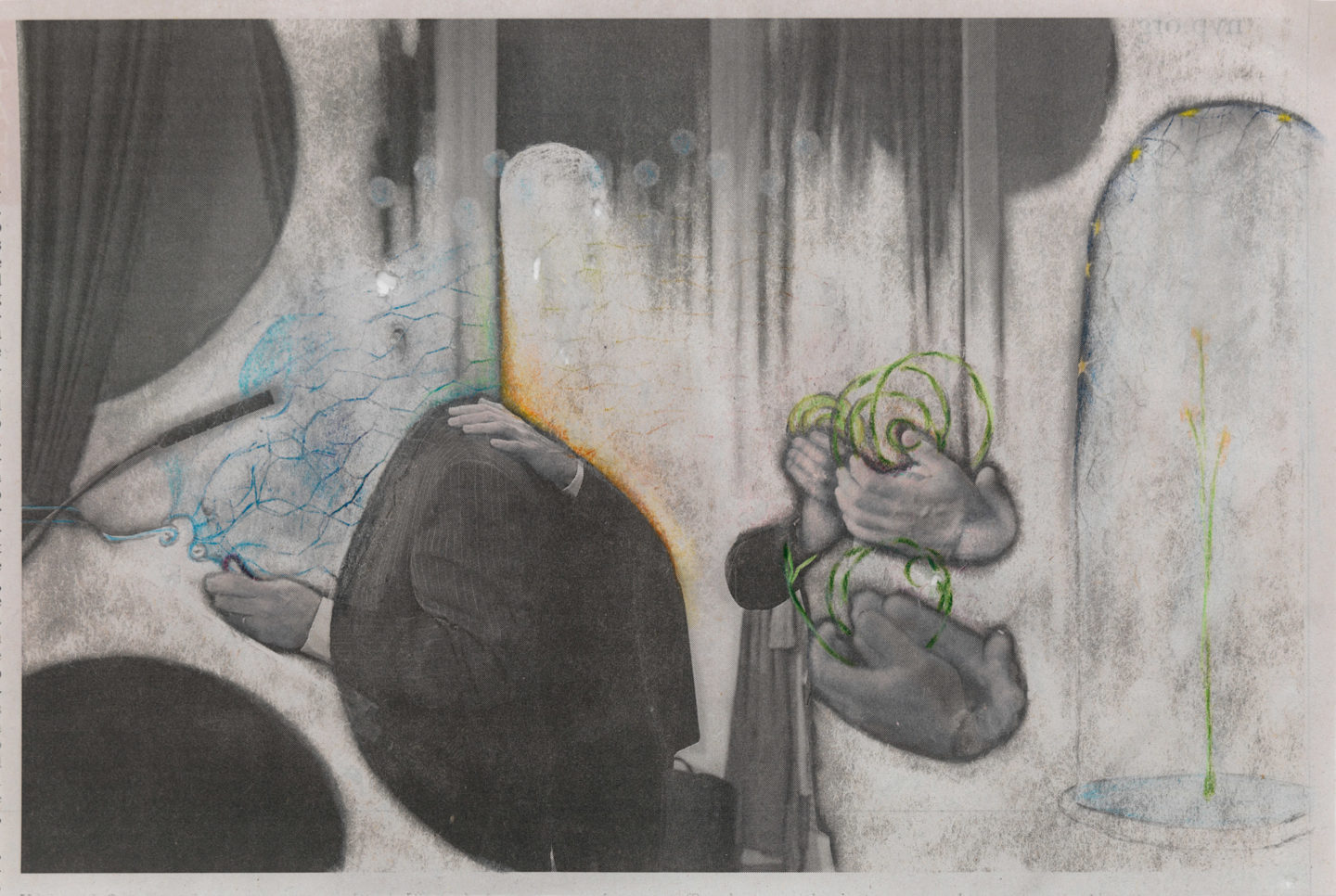
Graphite and coloured pencil on newsprint
16.5 x 24.5 cm
6 1/2 x 9 5/8 in
Christian Holstad, Entranced, 2021
More info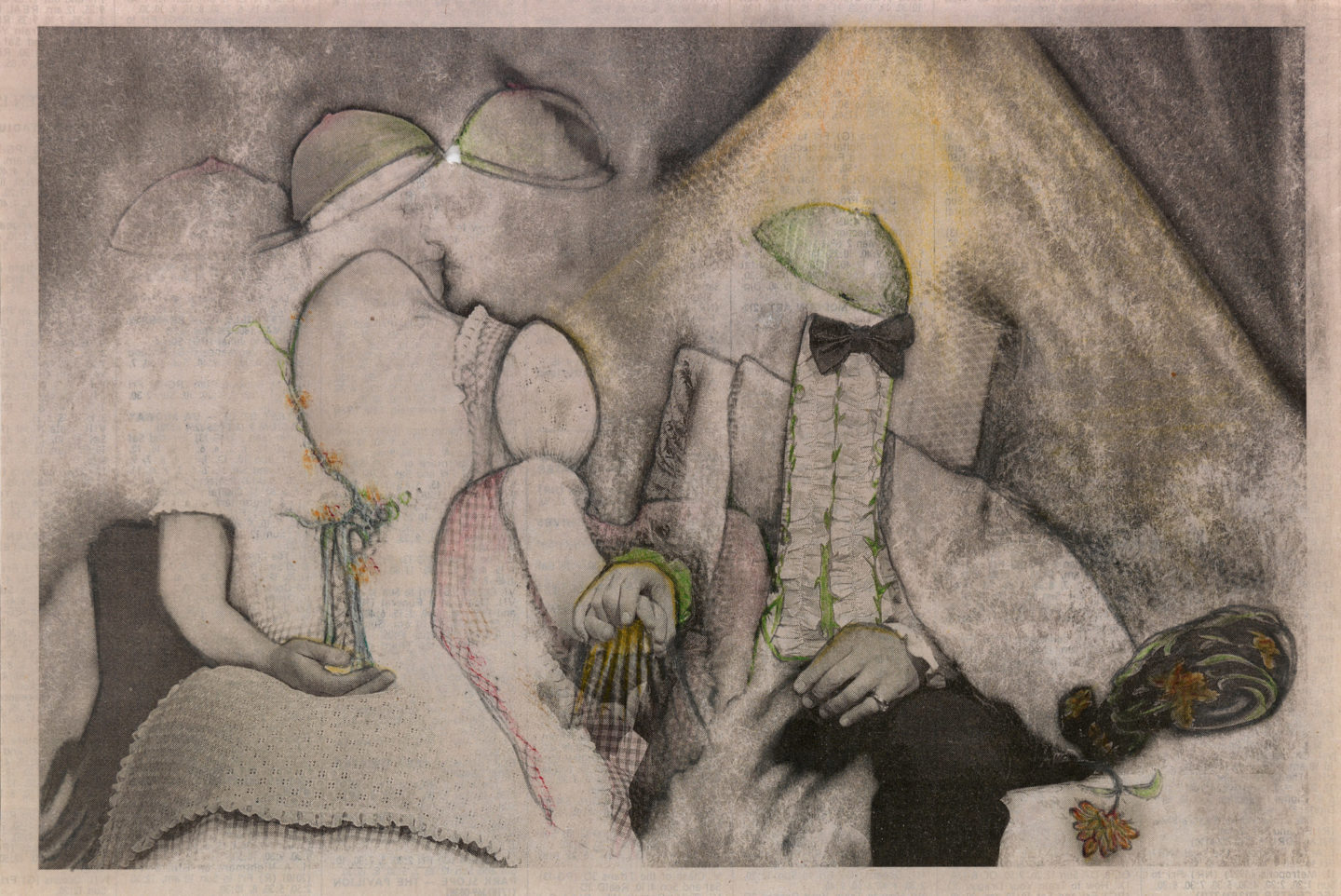
Graphite and coloured pencil on newsprint
16 x 24 cm
6 1/4 x 9 1/2 in
Christian Holstad, Passing fancies, 2021
More info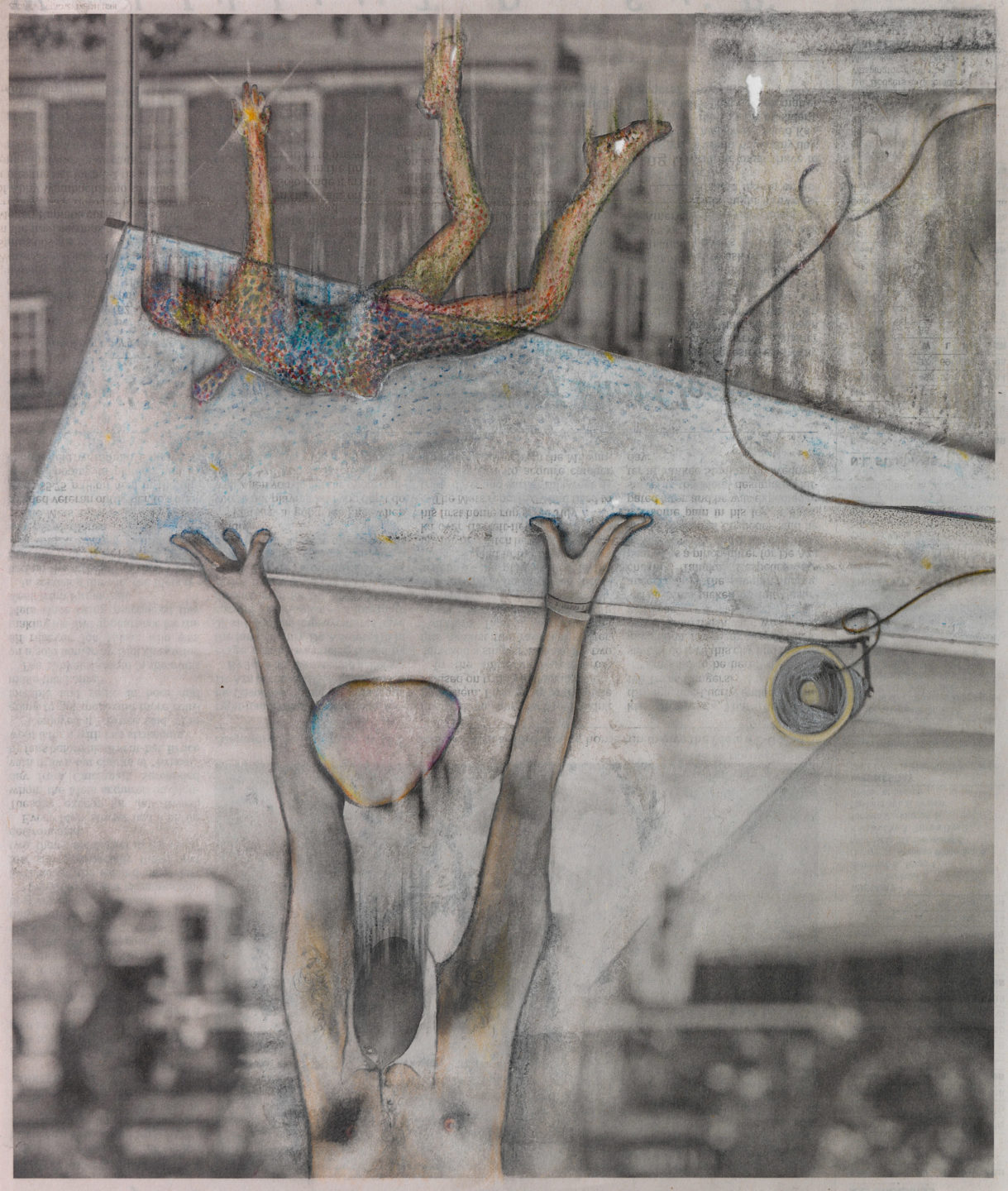
Graphite and coloured pencil on newsprint
28.5 x 24 cm
11 1/4 x 9 1/2 in
Christian Holstad, Star catchers, 2021
More info6
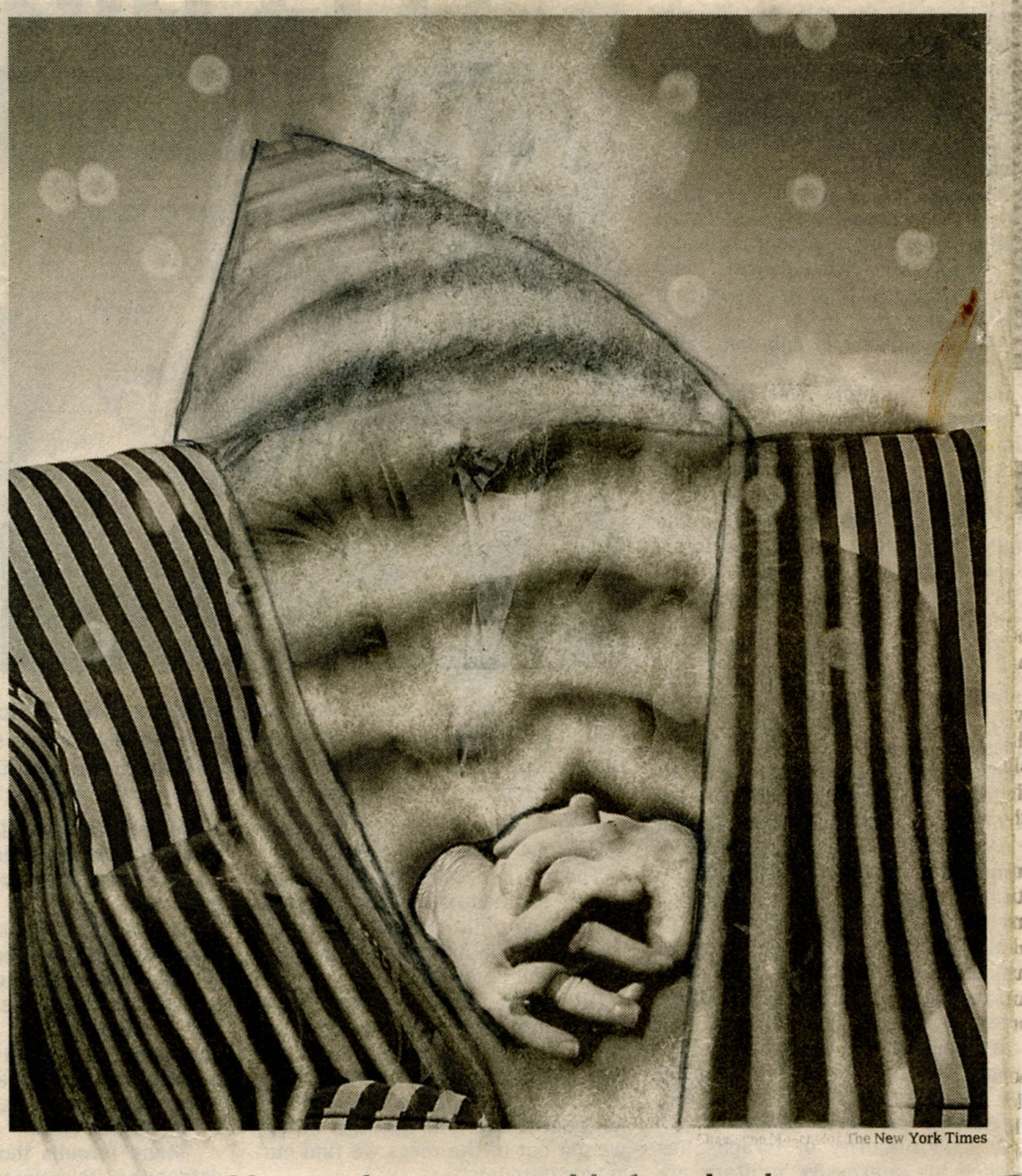
Graphite on newsprint
16 x 14 cm
6 1/4 x 5 1/2 in
Christian Holstad, Grain fields, 2003/2021
More infoGrain fields, 2003/2021, is an early example of the artist’s celebrated Eraserhead drawings. For the past year the artist has meditated close to this small drawing, returned to him after the passing of a close friend to whom Holstad had given the work. The artwork, transformed, bears new meaning.
About the artist
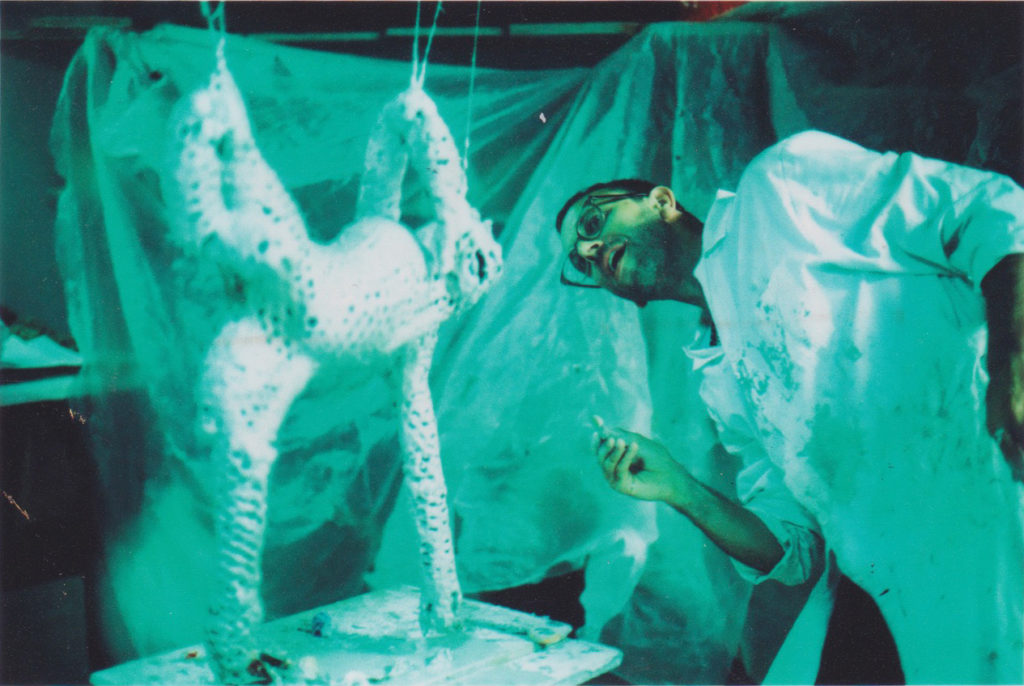
Christian Holstad was born in Anaheim, California, in 1972 and lives and works in New York City. Recent solo exhibitions include Consider Yourself As A Guest (Cornucopia) staged at Artissima, Torino (2020) and Ca’ Foscari University of Venice (2019). The artist has participated in recent institutional group exhibitions including: Transitions and Transformations, NSU Art Museum, Fort Lauderdale (2019–2021); OnSite; A semi-permanent installation, Swiss Institute, New York (2018–ongoing); A Cool Breeze, Galerie Rudolfinum, Prague (2019); About a Vase, Fondazione Museo Montelupo Onlus, Montelupo Fiorentino (2018); Still Human, Rubell Museum, Miami, Florida (2017–2018); C.O.P., works from the de la Cruz collection, Nova Southeastern University, Fort Lauderdale (2017).
His work is in the permanent collections of institutions including the Museum of Modern Art, New York; Carnegie Museum of Art, Pittsburgh; Museum of Contemporary Art, Los Angeles; Museum of Contemporary Art, North Miami; Museum of Contemporary Art, Chicago; Astrup Fearnley Museet for Moderne Kunst, Oslo; Museo Internazionale delle Ceramiche, Faenza.
